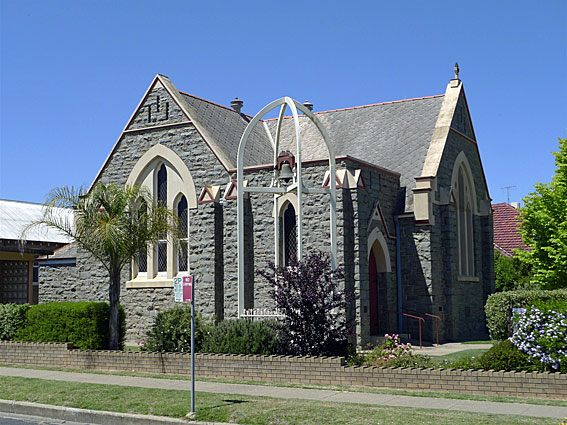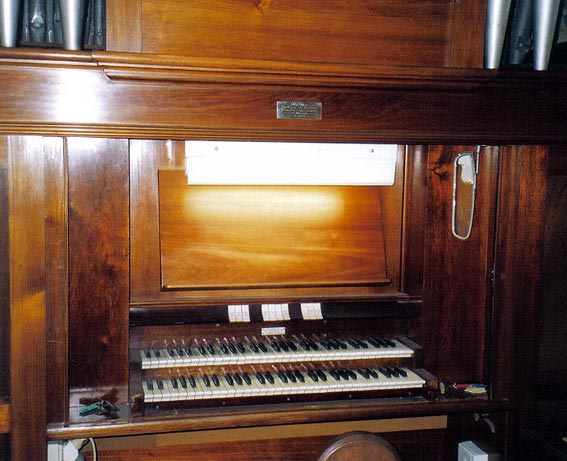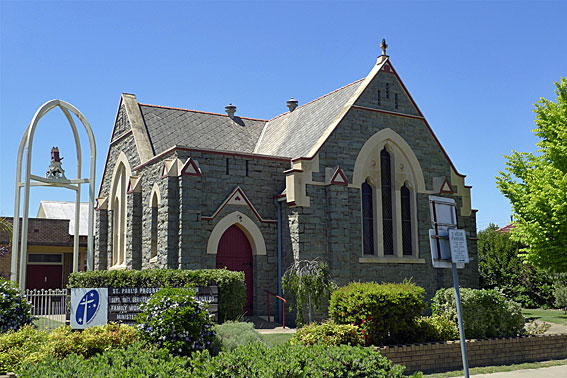St Paul's Presbyterian Church
Young
B. 1924 Geo Fincham & Sons. 2m., 7 sp.st., 3c., tub.pn.

Photo: Trevor Bunning (November 2011)

Information and photos supplied by Bill Fraser (April 2007):
It appears that someone has changed two stops around as the original names are papered over. I suspect the specification originally had an Open Diapason on the Swell which has been made into a Principal for the Great, and the Wald Flute was originally 4' on the Great and has been made into an 8' on the Swell. However I cannot be sure.

From the 2010 OHTA Conference Book, Dr Kelvin Hastie writes:
A thematic history of Young was written in 2008 by Ray Christison. This contains a brief history of the Presbyterian Church buildings, as follows: “ The first Presbyterian minister was appointed to Young. . . and Grenfell in September 1867. Services were held in a bark-clad building on the Temora Road until this structure was blown down in a storm. It was replaced by a timber structure in Cloete Street. Construction of a church at the southern end of Lynch Street was commenced in 1871.
A site for a new church was acquired on the corner of Lovell and Lynch Streets in 1919 and the foundation stone laid in 1920. The church was constructed with bluestone quarried from Bendick Murrell, with steps and arches of local grey granite. The roof was clad in slate. The building was officially opened on 14 December 1921 by the Moderator-General of the Presbyterian Assembly of Australia.”i
The small pipe organ, located in a chamber, was built in 1924 by George Fincham & Sons. Its specification was highly unusual, even for the time, insofar as the stops on the Swell were similar in tonal disposition as those on the Great and there was no 8’ Flute on either division. The instrument was also noteworthy for the absence of octave and sub-octave couplers, a common feature used in small instruments of the period to maximise tonal output.
In recent years Ian Brown has transposed two of the stops: the Great Flauto Traverso 4’ is now on the Swell at 8’ pitch, and the Swell Open Diapason 8’ is now on the Great as a Principal 4’. The instrument retains its tubular-pneumatic action and distinctive Fincham stopkeys.
The original specification, noted in January 1982 by Kelvin Hastie, was as follows:
-
-
George Fincham & Sons, 1924 (2/7 tubular-pneumatic)
- Tubular-pneumatic action
-
- Compass 56/30
-
- Balanced swell pedal
-
- Full organ pedal
-
Great |
8 8 4 8 8 4 16 |
i Ray Christison, Thematic History of Young Shire. NSW Heritage Office and Young Shire Council, 2008, 90-91. (see www.young.nsw.gov.au)

Photo: Trevor Bunning (November 2011)